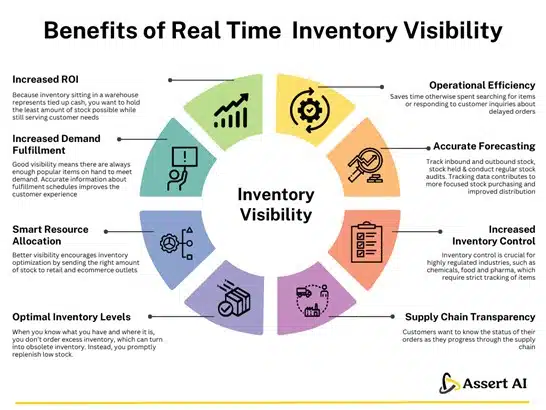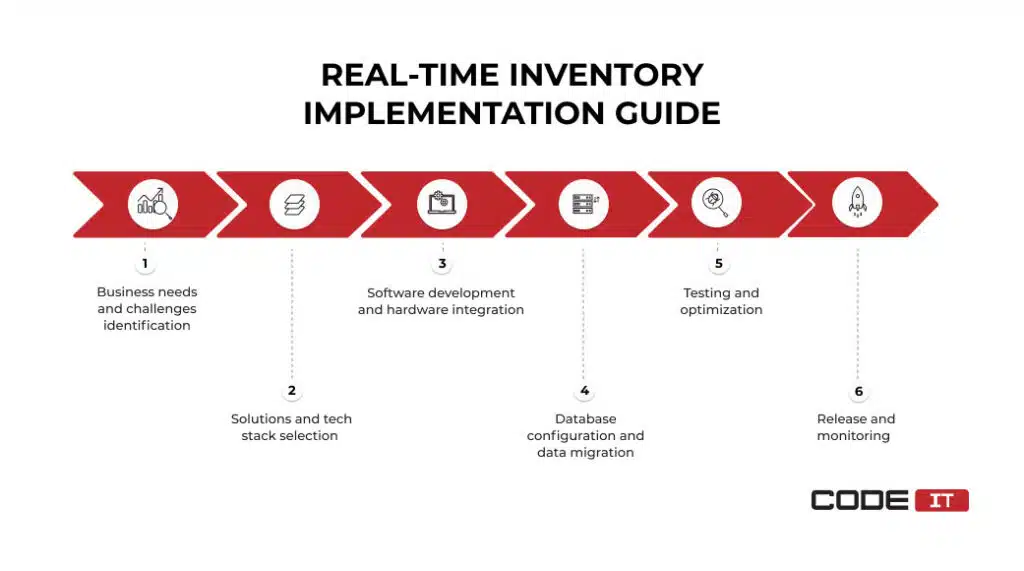Retail Systems Research conducted a study revealing a staggering 56% of retailers have an issue with accuracy in tracking inventory, resulting in lost sales opportunities and customers being dissatisfied. Picture losing customers simply because there was a delay in updating your inventory levels!
This is where web scraping-powered business solutions such as tracking inventory in real-time come into the picture. They enable businesses to track available stock, changes in prices, and competitor activities in real-time.
What about the issue of accessing this information? Web scraping is the answer. In this post, I will discuss how web scraping is designed to track inventory in real-time and its significance to current-day retailing.
Why Real-Time Inventory Tracking Matters?

Image Source: Redis
Consider the following: A customer visits your store’s website, places a product in their cart, and heads to the checkout page, only to be informed that the item is currently not available. Disappointing, right? Businesses that use old-fashioned inventory systems experience this problem on a regular basis.
Real-time inventory tracking updates solves this problem with inventory management by updating stock levels in real-time, so your website can accurately showcase what products are available. However, its advantages extend beyond preventing stockout situations. Here’s why it is necessary:
1. Higher Customer Satisfaction
Customers expect correct information. Tracking inventory in real-time guarantees that what customers is see is what is readily available, leading to a positive experience which increases brand trust.
2. Streamlined Supply Chain
Having a clear understanding of stock, as well as what is running low, allows for the streamlining of the supply chain, and decreases the likelihood of overstocking, delay failures, and excessive costs.
3. Adjustable Pricing
Real-time data allows prices to fluctuate based on competition, demand, and market, and keeps the business competitive while maximizing profits.
4. Lower Expenses
Both overstocking and stockouts are costly. Real-time tracking helps the balance to be maintained in the long run.
Why Real-Time Data Access is a Challenge for Retailers?
Despite the obvious advantages of real-time inventory tracking, obtaining the information necessary to keep the systems running smoothly is difficult. Retailers tend to depend on internal data which is sometimes insufficient. Better inventory and pricing strategies require information from external sources like competitor websites, marketplaces, and even supplier portals.
This is where the traditional approach fails. Collecting data manually from different sources is incredibly difficult, slow, and at times impossible. This is the point of emphasis for web scraping.
How Web Scraping Powers Real-Time Inventory Tracking?
This forms the basis of most real-time inventory tracking solutions. It enables retailers to achieve the following:

1. Competitor Price Monitoring
Web scraping allows real-time monitoring of competitor pricing and dynamically alters the strategy according to the actions of competitors. Pricing is an extremely important parameter when it comes to retailing. With web scraping, you can monitor competitor prices in real time and adjust your own pricing strategy accordingly. For example, if a competitor lowers the price of a popular product, you can respond instantly to stay competitive.
2. Stock Level Alerts
Certain products across various platforms have certain stock levels that, when reached, trigger reordering. Through web scraping, retailers are made aware of the drop in stock levels enabling them to reorder before running out completely. This allows e-commerce businesses that sell across multiple marketplaces to manage stock levels more effectively.
3. Trend Analysis
With the use of social media, forum, and review site data scraping, you can analyze changes and patterns to forecast trends and modify your inventory. For instance, if certain items are being recommended on social media, you might want to prepare yourself to fulfill the demand.
4. Supplier Monitoring
Webs scraping can be done on competitors, but on their suppliers as well. You can track the suppliers’ websites for available stock, delivery times, and pricing changes. This enables better planning of the inventory without any unknown elements.
5. Dynamic Pricing
Dynamic pricing can be applied to real time data. If the demand for a particular item soars, the price can be increase to optimize profit returns. Alternatively, a less popular item that continues to sit in your inventory can have its price reduced to encourage sales.
6. Improved Omnichannel Inventory Management
With many retailers selling via Shopify, Amazon, Walmart, or their respective websites, web scraping guarantees: Automated retrieval of stock levels – prevents overselling and out-of-stock issues. Automated changes – allows accurate reflection of product availability everywhere. Enhanced user experience – ensures customers see the correct inventory status, all the time.
Benefits of Using Web Scraping for Real-Time Inventory Tracking
- Precision: The ability to web scrape enables accurate and relevant data collection which reduces the chances of making mistakes.
- Efficiency: Data capture and processing happens instantly which helps in making timely decisions.
- Flexibility: Web scraping offers the capability to retrieve large amounts of data from different sources which suits the needs of any business.
- Affordability: Automated data capture reduces the costs associated with manual collection efforts.
- Improved Market Position: Having real-time data puts you ahead of other businesses that depend on obsolete information, allowing streamlined service delivery.
How to Choose the Best Real-Time Inventory Tracking Solution?

Software that is used for tracking inventory in real-time is not all similar. These are some of the most common aspects to consider when looking for a solution.
- Compatibility: Software being offered must work in combination with other systems such as the e-commerce system and supply chain management system.
- Business Requirement: Every client has an independent business. Get one that meets the user’s requirements.
- Adoption of New Technology: The inventory tracking system should have the ability to adapt to the growth of the business.
- Customer Care Services: Providers of such solutions should offer aids during and after installation and offer constant updates.
The Future of Real-Time Inventory Tracking
As new technologies disrupt the world, the solutions to track inventory in real time will also transform. The integration of AI into business processes will make them more efficient making automated decision-making and predictive analytics possible.
Consider a system that tracks inventory levels and forecasts future demand with historical data, market analysis, and weather patterns insight. Retailers would have the ability to stay on top of the competition by delivering increased services like never before.
Conclusion
Within retail, the most important resource is data. The adoption of real-time tracking of inventory should no longer be considered a competitive choice but simply a MUST for organizations seeking success smoothly. With the aid of web scraping, retailers will get information needed in real-time that can help customize inventory levels, apply dynamic pricing, and improve services.
Regardless of business size, deploying real-time tracking of inventory using web scraping is advantageous from every perspective. It is not about competing anymore, but about outperforming other players!PromptCloud offers top-of-the-line web scraping services designed specifically for your business. Reach out to us today so we can show how we help you make the most of real-time data.



















